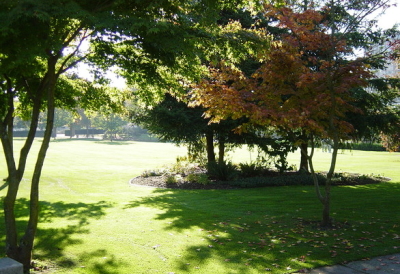Tree diseases and Insects
A tree may not have a temperature or sneeze or cough when it’s feeling poorly, but it can contract diseases or fall victim to damaging insects if its health isn’t looked after. Like humans, if good health is maintained, a tree is much less likely to contract a disease or fall prey to opportunistic insects. And you are less likely deal with tree disease and insect control.
When a tree is stressed, its immune system weakens, making it susceptible to the tree equivalent of illness. Trees have evolved to withstand 
Diseases that affect trees fall into two categories: Infectious and non-infectious. Infectious diseases are caused by microscopic living agents like fungi, protozoa, bacteria and viruses (think Dutch elm disease). Non-infectious diseases are the result of weak trees creating inferior seeds, which grow into weaker trees. A variety of chewing, sucking and boring insects are an everyday reality in nature. Healthy trees can withstand a normal amount of predatory insects every season. But weakened trees become a feast for these insects, often leading to quick and complete destruction of a tree.
Prevention is the Main Step in Tree Disease and Insect Control
Awareness is a strong preventive when it comes to tree health. It’s important to identify all the trees (and plants) on your property. Many diseases and insects are particular to a certain tree or plant. It’s also important to be aware of the condition of trees on nearby property. Do your trees look healthier than neighbors’ trees or vice versa? Either situation might be cause to consult with an arborist. Now take a closer look at your own trees. Do visible roots appear brown- or black-colored? Are there existing wounds in tree trunks and/or branches? Disease pathogens love an easy path into a tree. Do leaves have spots or marks on them? Do they appear healthy or withered?
Because tree health can deteriorate quickly, don’t hesitate to call an arborist, which is a tree’s version of a medical specialist, if you suspect a disease or insect infestation. In many cases, a tree’s health can be restored relatively quickly. In some states and municipalities, addressing and treating tree diseases is mandated in order to stop quick-spreading diseases or insect outbreaks.
Considering how long it takes for a tree to reach adulthood, maintaining the health of a tree or treating a weakened tree is a very good investment. Providing basic tree care and treating stressed or weakened trees with tree disease and insect control ensures that the benefits each tree provides will continue for many years to come. Contact or call SprayTech at 720.248.000 if you are concerned about the health of your trees or think you may need tree disease and insect control on your property. We provide tree services like tree spraying, tree fertilizing, tree deep root watering for Front Range communities including Castle Rock, Littleton, Highlands Ranch, Larkspur, and Monument areas.

